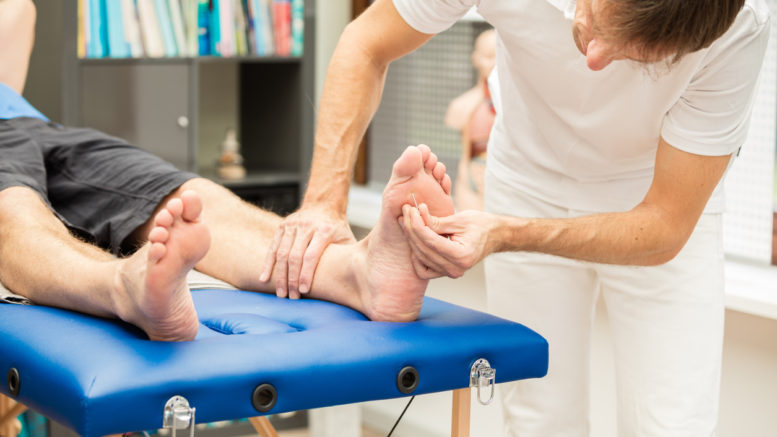Hand, foot, and mouth disease (HFMD) is a viral infection usually triggered by exposure to the Coxsackie virus (also commonly referred to as one word “coxsackievirus”). This condition causes a rash on the feet and hands along with sores inside the mouth. Most infections affect kids under age five, though it is possible for teens and even adults to catch it. As it is highly contagious, this virus tends to move swiftly through communities.
Although the disease is generally mild, those affected are often immensely uncomfortable and feel unwell for 7 to 10 days. When parents know what to look for, they can not only provide their kids with the right level of care, but also prevent its spread. To help everyone stay vigilant, here’s a primer on the symptoms, care practices, and prevention tips for HFMD.
Common Symptoms
About three days after exposure to the virus, flu-like symptoms arise, such as a fever, poor appetite, and sore throat. Although kids often feel too sick to eat or drink normally, it is important to keep their hydration levels up.
Within a couple of days, small red spots may appear in the back of the mouth. These spots quickly turn into painful blisters that make it difficult to eat and drink. Children also tend to refuse to swallow their saliva, causing drooling.
The skin rash along the feet and hands appears last. This rash looks like flat, bright red spots at first. Then, they turn into fluid-filled blisters that might pop and scab over.
How to Provide Care
Most kids can recover at home quite well by staying hydrated with cold sports drinks, soup, and frozen desserts. Other ways to keep everyone comfortable as the virus runs its course include these measures:
- Use over-the-counter medications to treat fevers.
- Avoid acidic foods and beverages, including fruit juice.
- Request prescription oral medication for severe mouth pain.
Parents should keep the rash clean by gently washing the area with mild soap and lukewarm water. The spots should remain uncovered until they blister and pop. At that point, it is best to cleanse the area, and then apply antibiotic ointment and a band-aid.
Ways to Stop the Spread
Without preventative measures, HFMD can spread rapidly through the household and community at large. Kids can spread it to their siblings and even their parents, along with their classmates, daycare providers, and people in the general public.
All it takes is contact with saliva or nasal mucus left on a nearby surface or touched directly. Fluid inside blisters can also spread the virus, so parents should always wash their hands after caring for their child.
Other ways to contain its spread include:
- Encouraging kids to sneeze and cough into a tissue then throwing it away
- Cleaning and sanitizing toys throughout the day
- Sanitizing all surfaces in the home and car every day
- Avoid sharing personal items, including dishes and silverware
Also, keep kids separate from their siblings if everyone in the house is not yet infected. Any children who are still well should sleep in a separate room from their ill siblings until all symptoms have resolved.
Potential Complications
Although rare, hand, foot and mouth disease can cause complications. Dehydration is the most common, as it is usually difficult to eat and drink enough each day to stay hydrated.
Serious infections can potentially occur if the infection reaches the heart, spinal cord, or brain. This very rarely happens but if it does, it can cause Encephalitis, Viral meningitis or Myocarditis.
Newborns and those with compromised immune systems face the highest chance of developing complications.
When to Seek Medical Attention
The symptoms should fully resolve within 10 days. If they do not, then that is the time to schedule an appointment with your healthcare provider.
Other symptoms that indicate the need to schedule an appointment include:
- Inability to swallow saliva or any liquids
- Risk of dehydration from not drinking enough
- Severe rashes that are spreading
Signs of dehydration, such as no tears while crying, dry skin, and minimal urine output, also indicate a need to seek medical diagnosis and treatment. It’s always better to err on the side of caution when dealing with medical conditions. Dr. Gregory Blomquist, Chief Medical Officer with CommunityMed urgent care clinic in Prosper, Texas, advises: “With any condition that you’re not completely certain of, it always pays to get diagnosed and treatment began as quickly and as effectively as possible.”
In addition, kids younger than six months should always see a medical professional right away if showing the symptoms of hand, foot, and mouth disease. And for children with weakened immune systems, there should be no hesitation.
Whenever parents feel their kids need to be seen by their doctor, it is wise to make an appointment. Physicians are always available to help them provide the right level of care to their children. They can provide an accurate diagnosis, care advice, and check for dehydration and other complications.
